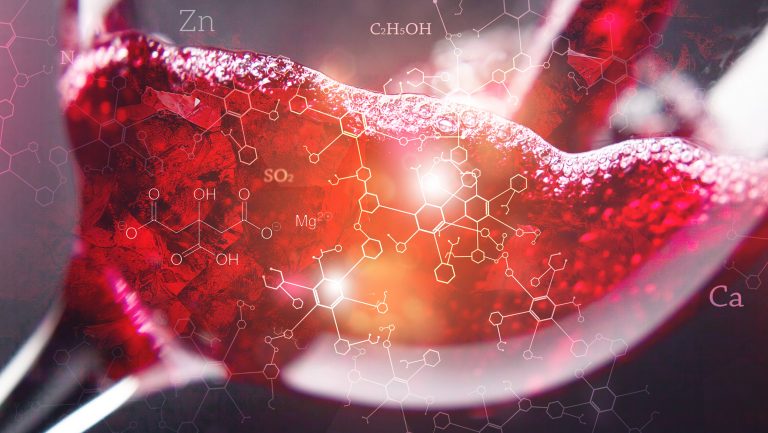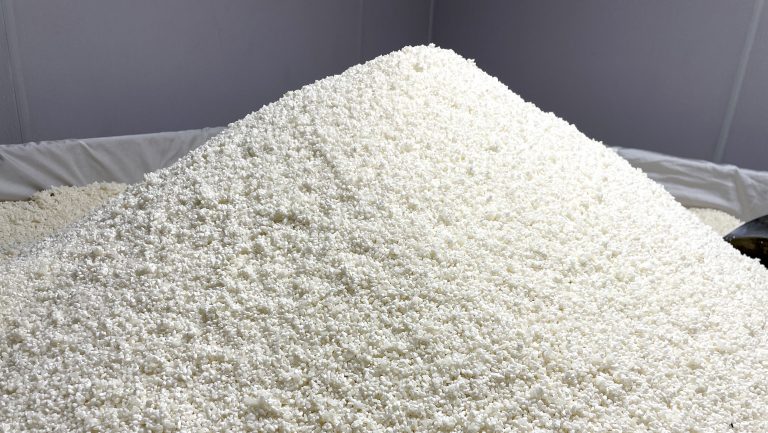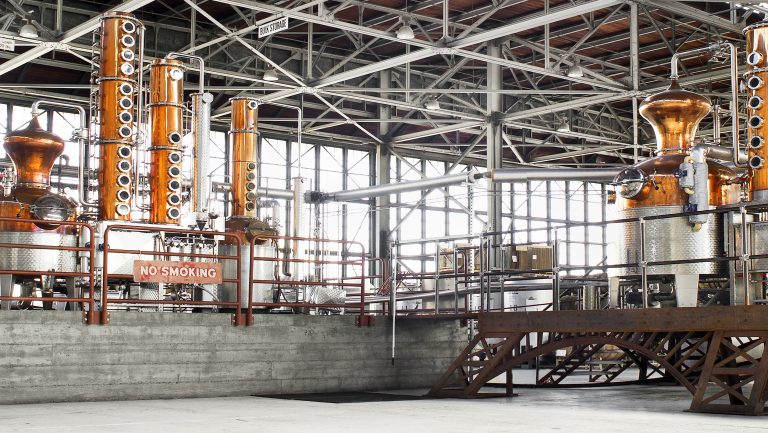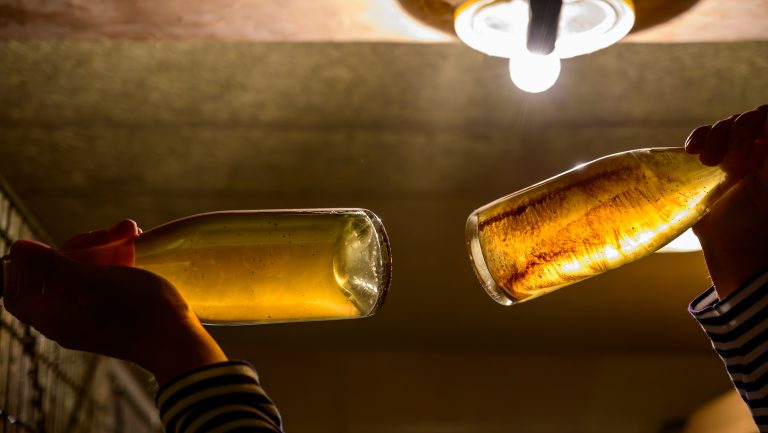When you’re casually perusing wine labels and shelf tags, it can sometimes be hard to find a description that doesn’t mention what kind of soil the grapes grew in. “The soil contains serpentine rock.” “A mix of mica, schist, and gneiss.” “This wine places the taster atop its loess soils.”
The obvious-yet-scarcely-questioned implication is that the type of soil in the vineyard can be evident in the glass—and not just evident but of prime importance, to judge from the prominent mention of soil in wine blurbs, wine reviews, and even in winemakers’ branding, like Didier Dagueneau’s Silex (“flint”), Frank Cornelissen’s Magma, and Bill Foley’s Chalk Hill.
Many of the labels offer no information about how the soil might affect the wine or an understanding of how it may be expressed. Others specify in vague terms some kind of connection: “the site contributes aromas of flint and iodine” or “the volcanic soil exhibits a profile of concentrated minerals.”

Don’t miss the latest drinks industry news and insights. Sign up for our award-winning newsletters and get insider intel, resources, and trends delivered to your inbox every week.
Sally Easton a journalist, educator, and Master of Wine who is based in the U.K., pointed out the vagueness and ubiquity of minerality in the publication Drinks Business in 2009. “It was as though the concept of minerality was the ‘sexy’ new wine term,” she now says, “and a sprinkling of its stardust would work wonders for a wine’s appreciation.”
The common, plausible assumption is that a small amount of material from the soil is drawn up through a grapevine’s roots and deposited in the fruit and its juice, where it lingers throughout vinification. The popular notion is that these molecules of flint or chalk can be tasted when we drink these wines—a literal expression of place, carried through the wine straight to our taste buds.
Scientific research has established that this is not the case.
How Vines and Minerals Interact
In his 2018 book, Vineyards, Rocks, and Soils, Alex Maltman—a geologist and professor emeritus of earth sciences at Aberystwyth University in Wales—painstakingly examines the chemistry of vines and minerals, and how they interact. In his book, he enumerates several reasons that it’s not possible for us to taste minerals from the soil when we drink wine.
To start, roots drink only water. For a plant to draw any substance from the soil into its roots, the substance must be dissolved in water. This means that what gets into a root isn’t slate or mica; if it comes from those rocks, it’s first been reduced to elemental ions like potassium or calcium. Those elements are the simple raw materials of rocks, and of living things, so they are used as nutrients by the plant, but they don’t have the “character” of rocky minerals.
Although the elements that make up rock include some of the same ones that grapevines draw in as nutrients, in rock they’re tightly bound up in the crystalline structure of the material. As the surfaces of rocks weather, they break down and release their substances into the surrounding soil, but that process is extremely gradual—far too gradual for the needs of a crop of plants. The vast majority of the mineral nutrients taken in by vines, Maltman writes, come from humus, the decayed biological matter that forms about 4 percent of vineyard soil. Growers supplement this with added fertilizer, which is made up of the same nutrients.
The particular balance of mineral nutrients that get into the vine is dictated primarily by the demands of the plant, not by the contents of the soil. Simply put, plants absorb only what they need, very selectively. “As water enters the vine roots,” Maltman writes, “it encounters a series of chemical gradients, metabolic mechanisms, and biological ‘screens’ that select which of the dissolved ions can pass through and be transported into the vine system.”
Ultimately, minerals don’t really taste like much, writes Maltman. “Geologic materials are generally tasteless and odorless anyway,” so even if they were present in a glass of wine, how could they flavor it? It’s true that licking and sniffing a clean, unweathered rock doesn’t impart much flavor, but couldn’t small amounts of dissolved mineral content in wine be tasteable?

The Question of Flavor
Michael Tordoff, a member of the Monell Chemical Senses Center in Philadelphia, researches the phenomenon of mineral taste. People can definitely taste minerals, he says, “all the ones with biological significance, for sure—for example, sodium, calcium, magnesium, and zinc. Nobody knows how, or whether there is some kind of general mechanism that detects ‘mineraliness.’” Experiments show that different minerals have different tastes, and they can be perceived in extremely low concentrations.
Says Tordoff, “Some people I have tested can detect calcium dissolved in water in micromolar concentrations—much lower than the levels in wine,” estimated at 2 millimoles per liter (a mole is a measurement of the amount of a minute substance). “It wouldn’t surprise me if calcium flavor modified other wine flavors.” But the flavor of wine is enormously complex, and whether these minerals can actually be perceived in wine has yet to be tested.
In 2003, Randall Grahm, the founder of Bonny Doon Vineyard, was curious about the potential connection between substance and taste, so he directly infused rocks into wine in the barrel, bypassing the vine. Although the main effect was a “disastrous,” unexpectedly rapid pH shift in the wine, “actual exposure to minerals definitely created the sensation of ‘minerality,’ for what it’s worth,” Grahm says. “By all reckoning, there does not appear to be a mechanism of outright mineral transfer from soil to grape. But I think there are still some occult mechanisms that we don’t understand.”
Maltman devotes the lengthy epilogue of his book to an exploration of a variety of mechanisms, both known and potential, by which geology can influence wine’s flavor—the manner in which a particular soil drains or traps water, for example, and how it retains or reflects the sun’s heat. New mechanisms may be discovered, he says, in which soil content affects microbiota or the expression of grapevine genes.

So What Is Minerality in Wine?
In essence, the word mineral is used in the world of wine to refer to three things, and confusion naturally arises when we think of them singularly. First, the word references the actual geologic minerals that make up the rocks in the ground: a chunk of quartz, say, or a hectare of volcanic bedrock. In another usage, “minerality” can also refer to nutrient minerals, like potassium, that vines absorb through their roots and use in vital processes. Finally, the word is a flavor descriptor. When we read that a Vouvray is “full of unctuous minerals, yellow plums, and honey,” we get a mental image of the wine, and we understand that the plums and honey are only metaphorical ingredients—as are the minerals.
What is it that people are talking about when they talk about experiencing minerality in wine? “When I’m discussing a wine with someone and they use the term, I usually ask them if they can describe that attribute differently,” says Anna Katharine Mansfield, an associate professor of enology at Cornell. “Ask a handful of different wine ‘experts’—whatever that is—what they’re describing when they say ‘minerality’ and you’ll get a range of answers: ‘It’s a smell, it’s a taste, it’s a combination of smell and taste. It’s a combination of mouthfeel characteristics, acid level, and aroma!’”
Grahm calls the word “pretty darn ambiguous” but describes the perception as “a greater sensation of length on the palate and a certain aromatic reticence upon opening—or tightness or closed quality—seemingly indicating a far greater appetite for oxygen.” And although the mechanism as to how it may get there is unclear, he associates this reductive character with “the strong expression of soil characteristics.”
Since minerality is so elusive, a number of international sensory scientists from Lincoln University in Christchurch, New Zealand, the University of Burgundy Franche-Comté in Besançon, France, and the Institute of Sciences for Vine and Wine at the University of Bordeaux, among others, have conducted studies in which wine professionals were given wines to taste and asked to indicate which ones had the subjective characteristic they would call minerality. The wines were then analyzed in an attempt to identify the aspects of their chemical composition that might correlate with the perceived minerality.
The results of such studies have been mixed, with one study contradicting another. Research like that conducted by the Department of Viticulture and Oenology at Mendel University in Brno, Czech Republic and the Department of Fermentation Chemistry and Bioengineering at the University of Chemical Technology in Prague, found that types of acid can lead wine to being described as mineral-tasting; other research found the opposite. Of the uncontested correlations, however, minerality has been found to occur in tandem with sulfur dioxide, a compound characteristic of reductive-style wines, as well as with some other sulfur compounds. “I think of these sulfur-containing, or reductive, compounds as sort of little weirs in the flavor stream of the wine,” says Grahm, “slowing down its flow [of flavor] but ultimately contributing to the qualities of dimensionality and length.”
Is Minerality Still a Useful Concept?
“Outside of wine, we’re typically happy enough describing things in metaphorical or idiomatic ways,” says Easton. “So why not with wine too? Does the wine taste [or] feel like stones, slate, gunflint, chalk, iodine—whatever? We know we’re not tasting the minerals of such things, but we can associate the imagery in descriptions.”
The wine writer Alice Feiring agrees. “I think most people who taste wine and identify a flavor or texture as ‘minerality’ are talking in a poetic sense,” she says. In her 2017 book, The Dirty Guide to Wine, she avoids the word almost entirely since she doesn’t find it useful and considers it, she says, “a straw man.” According to Feiring, wine science’s heated focus on the fact that there’s no literal uptake of tasteable minerals from the earth tends to overshadow the ways in which soil is still highly relevant to wine.
“What is more interesting” than putting the names of soils on wine labels, says Feiring, “is to drink a wine grown where it’s so rocky that it’s nearly impossible to farm, and how [the wine is] far from fruity—a kind of a rugged survivor. That lets you find the place in the wine.”

Dispatch
Sign up for our award-winning newsletter
Don’t miss the latest drinks industry news and insights—delivered to your inbox every week.
Paul Adams is the senior science research editor at Cook’s Illustrated. He lives in New York City, where he writes about food and drinks.







